3,3'4,4'-二苯甲酮四羧酸二酐,Benzophenone-3,3′,4,4′-tetracarboxylic dianhydride,96%
产品编号:Sigma-B9750| CAS NO:2421-28-5| MDL NO:MFCD00005923| 分子式:C17H6O7| 分子量:322.23
本网站销售的所有产品仅用于工业应用或者科学研究等非医疗目的,不可用于人类或动物的临床诊断或者治疗,非药用,非食用,
| 产品名称 | 3,3'4,4'-二苯甲酮四羧酸二酐 |
|---|---|
| 英文名称 | Benzophenone-3,3′,4,4′-tetracarboxylic dianhydride,96% |
| CAS编号 | 2421-28-5 |
| 产品熔点 | 218-222 °C(lit.) |
| 产品沸点 | 638.8±40.0 °C at 760 mmHg |
| 产品密度 | 1.7±0.1 g/cm3 |
| 产品闪点 | 286.1±27.4 °C |
| 精确质量 | 322.011353 |
| PSA | 103.81000 |
| LogP | 1.94 |
| 外观性状 | 无气味的淡黄色粉末固体 |
| 蒸气压 | 0.0±1.9 mmHg at 25°C |
| 折射率 | 1.700 |
| 溶解性 | 起反应 |
| 稳定性 | 常温常压下稳定,避免氧化物,水分接触, |
| 储存条件 | 保持容器密封,放入紧密的出藏器内,储存在阴凉,干燥的地方 |
相关文档
化学品安全说明书(MSDS)
下载MSDS质检证书(COA)
相关产品
| 符号 |

GHS07 |
|---|---|
| 信号词 | Warning |
| 危害声明 | H319-H335 |
| 警示性声明 | P305 + P351 + P338 |
| 个人防护装备 | dust mask type N95 (US);Eyeshields;Gloves |
| 危害码 (欧洲) | Xi:Irritant; |
| 风险声明 (欧洲) | R36/37 |
| 安全声明 (欧洲) | 25 |
| 危险品运输编码 | NONH for all modes of transport |
| WGK德国 | 1 |
| 海关编码 | 29183000 |
Synonym:4,4'-Carbonyldiphthalic anhydride, BTD Section 2 - COMPOSITION, INFORMATION ON INGREDIENTS
Risk Phrases: 36/37 Section 3 - HAZARDS IDENTIFICATION EMERGENCY OVERVIEW
Irritating to eyes and respiratory system.The toxicological properties of this material have not been fully investigated.Moisture sensitive. Potential Health Effects Eye: Causes eye irritation. Skin: May cause skin irritation. Ingestion: May cause irritation of the digestive tract. The toxicological properties of this substance have not been fully investigated. Inhalation: Causes respiratory tract irritation. The toxicological properties of this substance have not been fully investigated. Chronic: No information found. Section 4 - FIRST AID MEASURES Eyes: Flush eyes with plenty of water for at least 15 minutes, occasionally lifting the upper and lower eyelids. Get medical aid. Skin: Get medical aid. Flush skin with plenty of soap and water for at least 15 minutes while removing contaminated clothing and shoes. Wash clothing before reuse. Ingestion: If victim is conscious and alert, give 2-4 cupfuls of milk or water. Never give anything by mouth to an unconscious person. Get medical aid. Wash mouth out with water. Inhalation: Remove from exposure to fresh air immediately. If not breathing, give artificial respiration. Get medical aid. Notes to Physician: Treat symptomatically and supportively. Antidote: None reported. Section 5 - FIRE FIGHTING MEASURES General Information: As in any fire, wear a self-contained breathing apparatus in pressure-demand, MSHA/NIOSH (approved or equivalent), and full protective gear. During a fire, irritating and highly toxic gases may be generated by thermal decomposition or combustion. Extinguishing Media: Do NOT use water directly on fire. Use foam, dry chemical, or carbon dioxide. Do NOT get water inside containers. Section 6 - ACCIDENTAL RELEASE MEASURES General Information: Use proper personal protective equipment as indicated in Section 8. Spills/Leaks: Vacuum or sweep up material and place into a suitable disposal container. Clean up spills immediately, observing precautions in the Protective Equipment section. Avoid generating dusty conditions. Provide ventilation. Do not get water inside containers. Section 7 - HANDLING and STORAGE Handling: Wash thoroughly after handling. Use with adequate ventilation. Minimize dust generation and accumulation. Avoid contact with eyes, skin, and clothing. Keep container tightly closed. Avoid ingestion and inhalation. Do not allow contact with water. Wash clothing before reuse. Keep from contact with moist air and steam. Storage: Store in a tightly closed container. Store protected from moisture. Store under nitrogen. Store in a cool, dry area away from incompatible substances. Section 8 - EXPOSURE CONTROLS, PERSONAL PROTECTION Engineering Controls: Facilities storing or utilizing this material should be equipped with an eyewash facility and a safety shower. Use adequate ventilation to keep airborne concentrations low. Personal Protective Equipment Eyes: Wear appropriate protective eyeglasses or chemical safety goggles as described by OSHA's eye and face protection regulations in 29 CFR 1910.133 or European Standard EN166. Skin: Wear appropriate protective gloves to prevent skin exposure. Clothing: Wear appropriate protective clothing to prevent skin exposure. Respirators: A respiratory protection program that meets OSHA's 29 CFR 1910.134 and ANSI Z88.2 requirements or European Standard EN 149 must be followed whenever workplace conditions warrant a respirator's use. Follow the OSHA respirator regulations found in 29CFR 1910.134 or European Standard EN 149. Always use a NIOSH or European Standard EN 149 approved respirator when necessary. Section 9 - PHYSICAL AND CHEMICAL PROPERTIES Physical State: Solid Appearance: light yellow powder Odor: Odorless pH: Not available. Vapor Pressure: Not available. Viscosity: Not available. Boiling Point: Not available. Freezing/Melting Point: 215 - 217 deg C Autoignition Temperature: Not available. Flash Point: 300 deg C ( 572.00 deg F) Explosion Limits, lower: 4.20 vol % Explosion Limits, upper: 16.00 vol % Decomposition Temperature: 300 deg C Solubility in water: reacts Specific Gravity/Density: Molecular Formula: C17H6O7 Molecular Weight: 322.22 Section 10 - STABILITY AND REACTIVITY Chemical Stability: Stable under normal temperatures and pressures. May decompose on exposure to moist air or water. Conditions to Avoid: Incompatible materials, dust generation, moisture, excess heat, exposure to moist air or water. Incompatibilities with Other Materials: Strong oxidizing agents, strong acids, strong bases, moisture. Hazardous Decomposition Products: Carbon monoxide, carbon dioxide. Hazardous Polymerization: Will not occur. Section 11 - TOXICOLOGICAL INFORMATION RTECS#: CAS# 2421-28-5 unlisted. LD50/LC50: Not available. Carcinogenicity: 3,3',4,4'-Benzophenonetetracarboxylic dianhydride - Not listed by ACGIH, IARC, NIOSH, NTP, or OSHA. See actual entry in RTECS for complete information. Section 12 - ECOLOGICAL INFORMATION Other No information available. Section 13 - DISPOSAL CONSIDERATIONS Dispose of in a manner consistent with federal, state, and local regulations. Section 14 - TRANSPORT INFORMATION IATA Not regulated as a hazardous material. IMO Not regulated as a hazardous material. RID/ADR Not regulated as a hazardous material. Section 15 - REGULATORY INFORMATION European/International Regulations European Labeling in Accordance with EC Directives Hazard Symbols: XI Risk Phrases: R 36/37 Irritating to eyes and respiratory system. Safety Phrases: S 25 Avoid contact with eyes. WGK (Water Danger/Protection) CAS# 2421-28-5: No information available. United Kingdom Occupational Exposure Limits Canada CAS# 2421-28-5 is listed on Canada's DSL List. CAS# 2421-28-5 is not listed on Canada's Ingredient Disclosure List. Exposure Limits US FEDERAL TSCA CAS# 2421-28-5 is listed on the TSCA inventory. SECTION 16 - ADDITIONAL INFORMATION N/A |
|
~10% 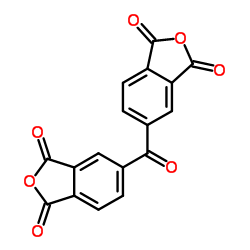
2421-28-5 |
| 文献:Sakakura, Akira; Ohkubo, Takuro; Yamashita, Risa; Akakura, Matsujiro; Ishihara, Kazuaki Organic Letters, 2011 , vol. 13, # 5 p. 892 - 895 |
| 上游产品 1 | |
|---|---|
| 下游产品 7 | |

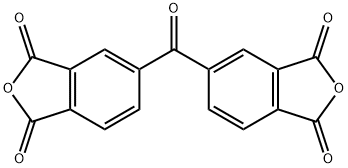
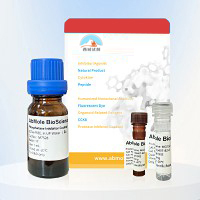



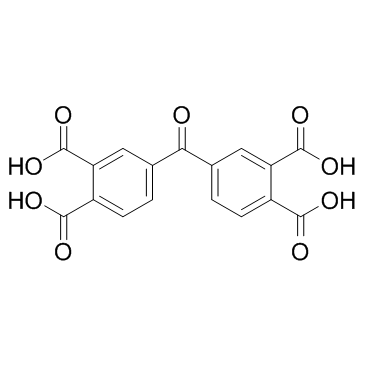
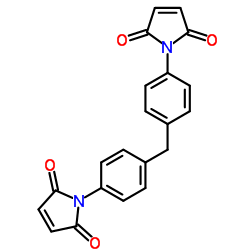
![4-[(3,4-dimethylphenyl)methyl]-1,2-dimethylbenzene结构式](/20230522/726-05-6.png)
![2-(3-hydroxyphenyl)-5-[2-(3-hydroxyphenyl)-1,3-dioxoisoindole-5-carbonyl]isoindole-1,3-dione结构式](/20230522/54942-20-0.png)

![5,5'-Carbonylbis[2-phenyl-1H-isoindole-1,3(2H)-dione]结构式](/20230522/6097-13-8.png)
![2-(4-hydroxyphenyl)-5-[2-(4-hydroxyphenyl)-1,3-dioxoisoindole-5-carbonyl]isoindole-1,3-dione结构式](/20230522/53417-18-8.png)





 浙公网安备 33010802013016号
浙公网安备 33010802013016号